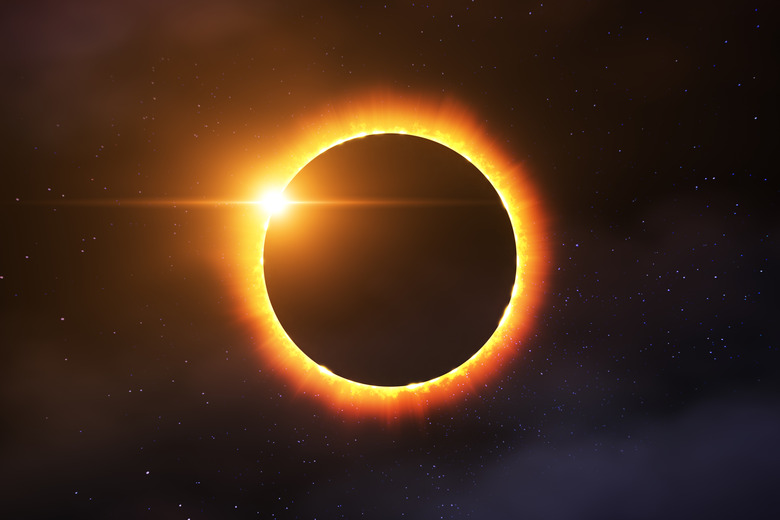The Similarities And Differences Between The Sun And Moon
The sun and the moon are the two most prominent celestial objects in Earth's sky. They affect the daily lives of people in significant ways but are very different in their characteristics and effects on the solar system and the Earth. Both of these bodies have been the subjects of extensive scientific research, as well as myths and tales across the ages.
Measurements of Time
Measurements of Time
Both the sun and the moon serve as bases for systems of time measurement. The moon is the Earth's only natural satellite and is the basis of the month on modern calendars. The moon takes 27.3 days to fully rotate around the earth. The sun, around which the Earth orbits, is the basis of the calendar year and day. The sun itself rotates within a period of about 25 days.
How They Were Formed
How They Were Formed
The moon and sun are both bright round objects in the sky. Indeed, viewed from the Earth's surface, both appear as similarly sized disks. That said, however, they are otherwise very different. The sun is a star, while the moon is a large mass of rock and dirt. According to most theories, the sun formed from the solar nebula, a giant mass of cloud and dust that collapsed because of its gravity. When it did, the material that pulled into the center formed the sun. When the Earth was formed in the early solar system, it didn't have a moon. The moon was likely created when a large planet collided with the Earth. The resulting particle cloud rose and eventually condensed into the moon.
Makeup and Light Emission
Makeup and Light Emission
The moon's surface is made of rocks and dirt. Under the crust is a mantle and small core, similar to the makeup of the Earth. The sun, like most stars, is a mass of gases. In the sun's case, this is mostly hydrogen and helium, with small amounts of oxygen, carbon, nitrogen and several other elements. Both bodies appear to emit light, at least to the human eye. The sun, however, produces its own energy and therefore its own light. The moon has no light of its own but reflects the light of the sun.
Effects on Earth
Effects on Earth
The sun is the source of light for the Earth and is the reason that life exists on the planet. It causes plants to grow, it heats the planet, it provides people with energy through solar panels and causes sunburns. The moon affects ocean tides because its gravitational attraction is stronger on the side of the Earth nearer to the moon. This attraction causes the "bulges" in the oceans. Because the Earth rotates faster than the moon does, these bulges move around, creating the world's tides.
Temperature Differences
Temperature Differences
The climates of both bodies are extreme. The moon has only a thin exosphere, rather than an atmosphere, and is heated by the sun, meaning the temperature of the "light" side reaches 123 degrees Celsius (253 degrees Fahrenheit). The dark side cools to negative negative 233 degrees Celsius (negative 387 degrees Fahrenheit). The sun's temperature is even hotter, with the photosphere (the light-emitting zone) ranging in temperature from 4,123 to 6,093 degrees Celsius (7,460 to 11,000 degrees Fahrenheit). The other layers of the sun's atmosphere are even hotter, with the corona reaching 500,000 degrees Celsius (900,000 degrees Fahrenheit).
Cite This Article
MLA
Akard, Gwendolen. "The Similarities And Differences Between The Sun And Moon" sciencing.com, https://www.sciencing.com/similarities-differences-between-sun-moon-8459351/. 30 April 2018.
APA
Akard, Gwendolen. (2018, April 30). The Similarities And Differences Between The Sun And Moon. sciencing.com. Retrieved from https://www.sciencing.com/similarities-differences-between-sun-moon-8459351/
Chicago
Akard, Gwendolen. The Similarities And Differences Between The Sun And Moon last modified August 30, 2022. https://www.sciencing.com/similarities-differences-between-sun-moon-8459351/
